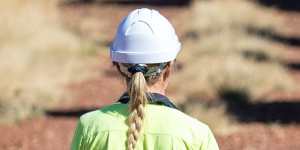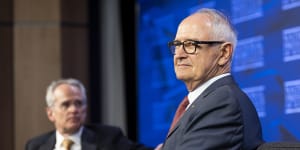Rather,says Professor Ross Garnaut,who with his two books on the subject and his creation of the Superpower Institute with former chair of the Australian Competition and Consumer Commission,Rod Sims,has done more than anyone else to popularise the notion,we could become a nation that sells green energy to the world embedded in the products we make cleanly at home.

A new solar farm in Queensland supplying Glencore mines in Mt Isa.Supplied
Australia contributes just one per cent of total carbon dioxide being pumped into the world’s atmosphere each year. Sure,we can those emissions at home,and we are bound to do so by the Paris Accord. But if we embed green energy into the products the world needs as it decarbonises we could reduce global emission by 7 per cent,Garnaut estimates.
“In a zero-carbon world,energy-intensive industry will be pushed to Australia,” he says.
What he means is that the large and growing economies of Europe and North Asia have already locked decarbonisation in,as has Australia. But unlike them,Australia has both and the space to make cheap clean energy to process them.
For example,Chinese iron and steel production is the source of about 4 per cent of the world’s carbon emissions,but China is determined to reach. Australia supplies about 60 per cent of China’s iron ore.
If that iron was processed in Australia using electricity and hydrogen from renewables rather than in China using coal,global greenhouse gas emissions would fall by about 2 per cent,writes ANU professor Ligang Song in the bookThe Superpower Transformation,edited by Garnaut.
This is the reason Andrew Forrest has to both hydrogen and renewables.
Similarly,says Garnaut,urea – used in 90 per cent of the world’s agricultural fertiliser – is currently created using energy,space and carbon intensive processes. With a surplus of renewable energy,that could be produced more cleanly in Australia for export.
The benefits from such new or expanded industries would reshape the nation,Garnaut believes. On behalf of his company Zen Energy,he has already been engaged in advising mayors in inland Queensland on the development of new industries reliant on cheap,green,locally produced energy.
He sees exports driving development in those areas close to ports and railways.
“Some industries will make sense scattered around Australia,but the big export industries will be on the coast,[such as] the Spencer Gulf in South Australia[and] Gladstone,Mackay,Townsville,in Queensland.”
Prime Minister Anthony Albanese this week advocated for a in Australia based on his government’s support for renewable industries,emphasising the need for domestic battery and solar manufacturing.
Those ambitions may well play out. But Garnaut,alongside advocates for expanded renewables and hydrogen like Sims and Forrest,also describes a future in which our traditional industries become more sophisticated and expand further.

Ross Garnaut (right) at the National Press Club in Canberra in February.Alex Ellinghausen
“Get this right,it will be the main source of growth of all that we trade. All of our growth can come from these industries for one or two generations. And that can underpin full employment with rising incomes for an expanding population.”
Get to the heart of what’s happening with climate change and the environment.